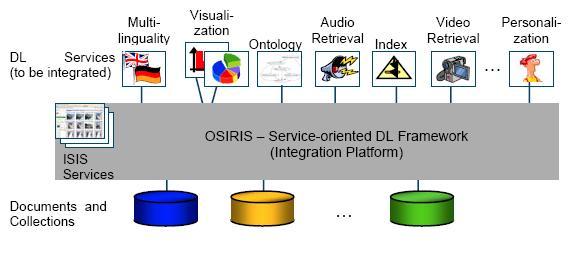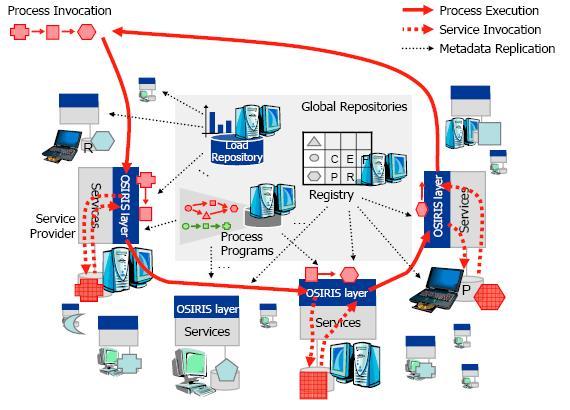|
||||||
|
||||||

|

|

|
|
DelosDLMS: Global Prototype Development
In the first two years of the EC-funded network of excellence DELOS (A Network of Excellence on Digital Libraries), work has mainly focused on improving digital libraries (DLs) by developing independent, powerful and highly sophisticated prototype systems. The overall goal of the DelosDLMS is the implementation of a prototype of a next-generation digital library management system. This system combines text and audio-visual searching, offers personalized browsing using new information visualization and relevance feedback tools, allows retrieved information to be annotated and processed, integrates and processes sensor data streams, and finally, from a systems engineering point of view, is easily configured and adapted while being reliable and scalable. The prototype will be built by integrating digital library functionality provided by the DELOS partners into the OSIRIS/ISIS platform, a middleware environment developed by ETH Zürich and now being extended at the University of Basel. The result of the integration – that is, the middleware infrastructure together with all the advanced DL functionality – will constitute the DelosDLMS.
Research Objectives
In addition, it features reliable execution by applying advanced database concepts – essentially for failure handling and concurrency control – at the level of processes. ISIS (Interactive SImilarity Search) is a set of DL services that have been developed on the basis of the OSIRIS middleware. ISIS includes a sophisticated index structure (VA-file) for similarity searching, which is particularly well suited for high-dimensional vector spaces. Furthermore, in terms of Digital Library functions, ISIS features rudimentary support for textual and content-based audiovisual searching. It also provides basic support for relevance feedback and visualization.
With the DelosDLMS, existing ISIS services will be significantly enriched by other specialized DL services that have been developed within the DELOS network. This will be achieved by integrating these services into the OSIRIS infrastructure, thereby combining them with other ISIS and non-ISIS services into advanced, process-based DL applications.
Expected Results
Two alternatives exist for integrating services with OSIRIS. First, there are tightly coupled services, which are tightly integrated into the OSIRIS runtime infrastructure. Advanced failure handling and load balancing are among the main advantages of this arrangement. In terms of failure handling, compensating services can be registered which are automatically invoked in case of failures. In terms of load balancing, ORISIS can automatically choose the node carrying the lightest load to invoke a service that is deployed several times. This is particularly important for computationally expensive services like feature extraction. Second, services can be loosely coupled with OSIRIS, meaning that services are described and invoked by standard Web service interfaces (SOAP and WSDL). This reduces the effort needed for integration but does not provide the benefits of tight coupling.
The process of identifying services which are best suited for integration into the DelosDLMS has already been started, and an inital set of services is presently being integrated, in most cases being loosely coupled. The final version will support a higher degree of reliability by tightly coupling as many services as possible. The areas from which the services to be integrated are taken include (but not limited to): sophisticated term extraction from text, text indexing and collection management, annotation services, reliable sensor data management, multimedia indexing, automatic search process generation and personalization services, image feature extraction, 3D shape recognition, special indexing techniques for video retrieval, audio feature extraction and audio retrieval, advanced visualization services and visual relevance feedback, self-organising map visualization, services for user interface generation and for interface functionality, active paper (linking digital information and paper), ontology services and natural language access, preservation services, services for multi-lingual access. This list will be extended and revised during the actual integration work.
Project Organization
Hans Joerg Schek, University of Konstanz
Heiko Schuldt, University of Basel
|



